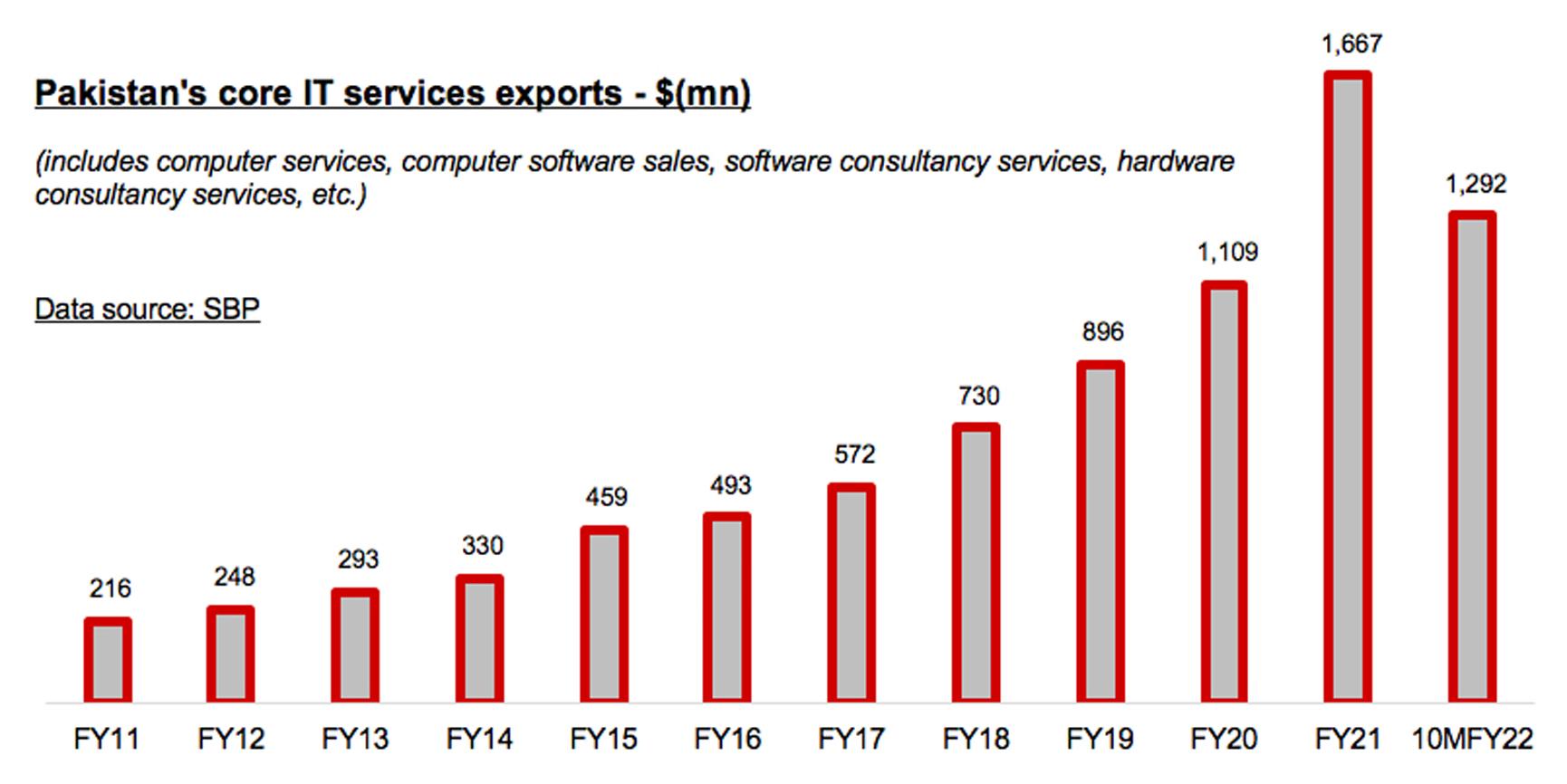PM Shehbaz has reportedly tasked his IT minister to grow IT exports to $15 billion in two years’ time. Setting steep targets isnot necessarily a bad thing, asaiming for the sky can result in progress that is sometimes unthinkable before. But it becomes a problem when ambitious targets are not complemented by relentless efforts on the ground. Successive governments have fallen into the trap of setting lofty targets for IT exports while not doing the required amount of policy work and private-sector enablement.
There is no doubt that Pakistan’s IT exports responded well during the pandemic under the previous government. During FY21, core IT exports (computer services, computer software sales, software consultancy services, hardware consultancy services, etc.) had reached $1.66 billion, reflecting 50 percent year-on-year growth, as per the SBP data. During the current fiscal, there is some slowdown in growth, as core IT exports in 10MFY22 were $1.29 billion, growing by 32 percent year-on-year
During FY21, core IT exports were roughly $140 million per month, on average. Now in FY22 thus far, the monthly export tally has come down to $130 million. Maybe exports will pick up in last two months of the fiscal; maybe IT firms will repatriate more proceeds instead of waiting for further depreciation in PKR. But as of now, the data suggesta deceleration in growth momentum of core IT exports. How can the government expect a tenfold increase in IT exports in just two years?
As Covid-19 ebbs globally, clients in Pakistan’s key IT export markets in the US, Europe and Middle East are expected to be more deliberate in undertaking digital transformation projects. This is in contrast to last couple of years when clients worldwide were in a mad rush to find IT firms and freelancers who could reliably provide IT services remotely. As demand slows abroad, the government itself can do little to boost IT exports. Private sector will need to find ways to accelerate, and the government can facilitate them.

It is thedrive of IT exporters (especially large-sized firms) and training of tens of thousands of IT professionals that holds the key. Even if the government agreed to the IT exporters’ demand to grant them a more liberalized foreign exchange regime (where IT firms are allowed to invest abroad a fifth to a third of their prior years’ export remittancesso they could acquire firms and set up new entities overseas), it won’t solve the core problem at home: a shortage of qualified IT talent that can hit the ground running!
This is not to suggest that demand-generation abroad for Pakistan’s IT services is an easy task. International marketing is a specialized (and costly) domain, and medium-sized local firms struggle to have connections on this front. Besides, in the absence of proactive support from Pakistani embassies and consulates abroad, local IT firms have to jump through a number of hoops just to get their workers there, comply with foreign business requirements, and build critical B2B connections and references.
But capacity is key to winning and retaining business. Once orders are in, a factory must have capacity to produce the goods, or it will lose credibility. Pakistan’s IT factory appears to be struggling with capacity, even at existing demand level. Shortage of qualified IT professionals is said to be growing largerevery year.The relevance and rigor of IT education being offered at local universities is not up to par. This is compounded by private sector’s reluctance to regularly train IT workers due to cost and retention issues.
Estimates suggest there are around 60 million IT professionals globally. Adjusting for Pakistan’s population size, it should have 1.6 million+ IT professionals. Actual number is about a fifth of that. Therein lies the challenge: find ways to train hundreds of thousand more youth each year,for a number of years, when existing academic and firm-level training capacities are unable to level-up significantly in short to medium term. Does the Shehbaz government have any innovative ideas to lend support to IT firms on this front?
























Comments
Comments are closed.